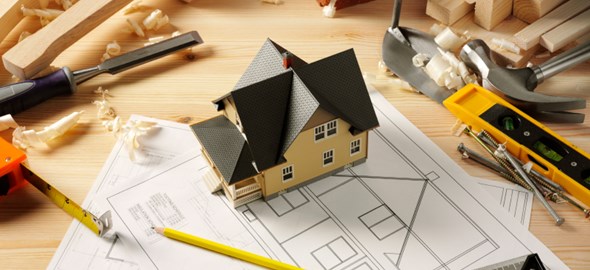
When you notice that patch of mould in the ceiling merging into the cracks on the wall of your outdated kitchen, you know it is time to renovate.
Where do you start? A project checklist is the best way to effectively carry out and start planning your redevelopment.
Using the 5 W’s, here is a guide on how to use a checklist for home renovations.
Now that you have made the decision to renovate your home, one of the first things you need to consider is whether you will be taking this responsibility on yourself or if you will hire help from construction services or a project manager (PM).
Consider the answers to the following questions when you come to making this decision: alongside work and family commitments, will the added juggle of checking the quality of the work and arranging the materials be too much? Are you comfortable with meeting unforeseen challenges within the project? If these are issues, it may be a good idea to consider a project manager or help from various construction services.
Typically, DIY projects overspend on materials by 20%. When you start looking at a renovation costing upwards of $200,000, this can start to get rather costly. As an alternative to this, a PM will provide a seven-year warranty for peace of mind on the work completed.
If you decide to work away at the renovations yourself, it is still necessary to work with tradesmen.
Make sure you keep a copy of insurance and licence information for worst-case scenarios.
In the design and planning stage, it is instrumental to a seamless project to not only keep the final result simple, but also to try to make as many final decisions as you can before you take on an overhaul. Changing your mind halfway through a project and restarting a section may mean having to employ external construction services to help rectify errors or assist with the additions. Not only will this waste time but it may also damage your budget. When starting your project, always work from the top of the room down. This way, by the time you get to the floors, you won't damage them. If you lay your new floor and then paint the ceiling, you’ll risk splattering all over the brand-new tile. Also, ensure that each trade is being carried out in all rooms at the same time. For example, all the plumbing should be installed at once, and flooring laid around the same time, too. This helps keep your project efficient.
Plotting which tasks will take place at which time will help with budgeting for your project as well as provide you with general knowledge of how long each section will take.
Before commencing with your renovations, be sure to express your plans with the local council. In some communities, changing the colour of the house exterior may require approval. It would be an inconvenience and a waste of funds to plan the entire project and later on discover you may need to push back project dates or, even worse, change the elements entirely.
In order to keep the costs manageable, you can research where you need to buy the elements in order to get the optimum balance between price and quality. It saves you time knowing which items you need to buy and where to purchase them. If you looked at one room at a time instead of the overall project, you may find that materials and colours will end up being inconsistent. By planning and buying ahead of time, your overhaul will look as if it was done all at once, giving you a cohesive aesthetic. In addition to this, items related to heating/cooling, wiring, and plumbing systems can be more expensive than expected, making for a scary blow to the budget if not planned from the start.
After figuring out the time and cost of a project, it is essential to follow a checklist in order to have an efficient project and avoid the possibilities of repeating work. For example, if you put in new flooring and then realise you never finished the plumbing, you'll be forced to take apart the flooring and then restructure it. A checklist allows for precision when it comes to managing both tasks and workforce.
Be mindful during the completion stages of your project, which typically uses 20% of your budgeted costs and allocated time. Once you get started, it is easy to be distracted by different styles and ideas, which can cause delay, extra costs, and rush jobs. Therefore, beginning your project with a checklist helps with the overall organisation of the renovation.